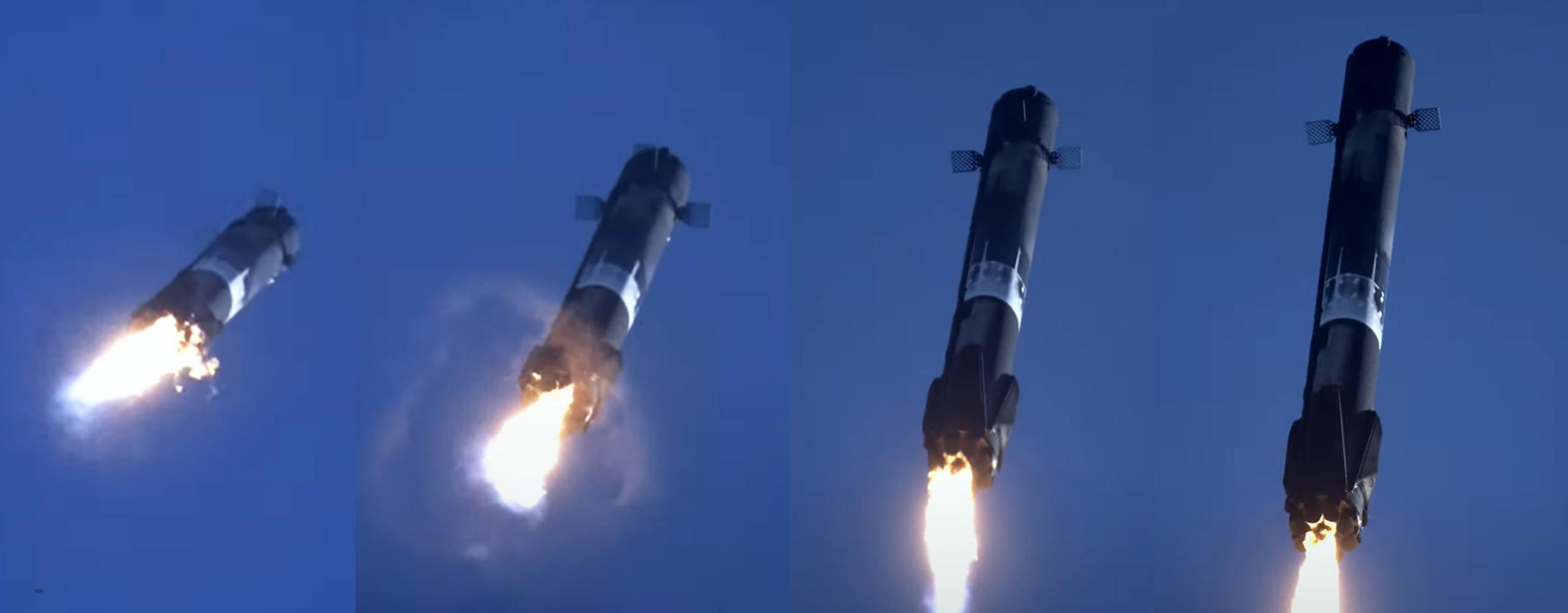

News
SpaceX Falcon booster completes 10th launch and landing in 19 months
Falcon 9 booster B1058 has successfully completed SpaceX’s Transporter-3 mission, acing its tenth orbital-class launch and landing in record time in the process.
The rocket lifted off as planned from Cape Canaveral Space Force Station (CCSFS) Launch Complex 40 (LC-40) at 10:25 am EST (15:25 UTC), Thursday, January 13th with 105 small satellites in tow, marking SpaceX’s third dedicated Smallsat Rideshare Program launch since January 2021. Beginning in 2022, the company aims to conduct three such rideshare launches annually, operating Falcon 9 a bit like an orbital bus service with the capacity for hundreds of small satellites from virtually any person, institution, or company on Earth – all for the unprecedentedly low price of approximately $5,000 per kilogram.
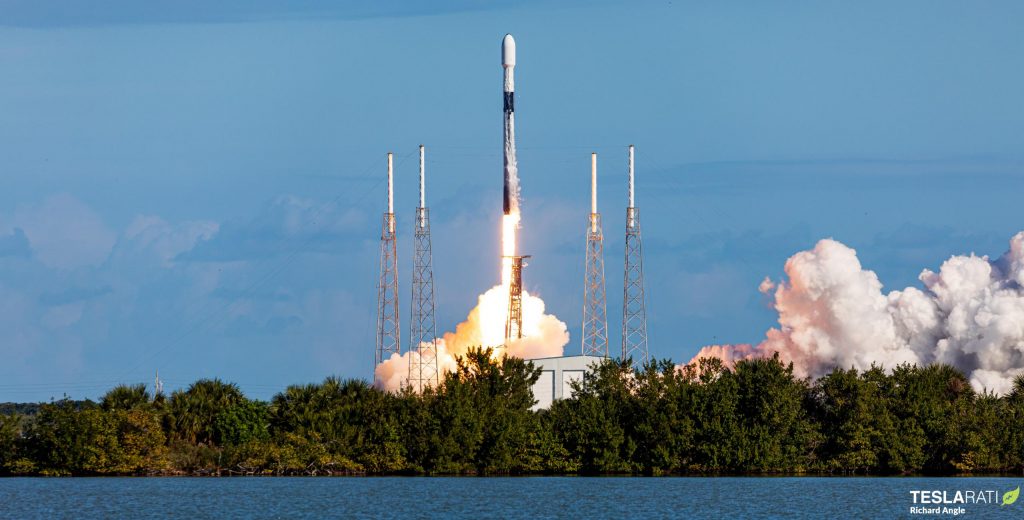
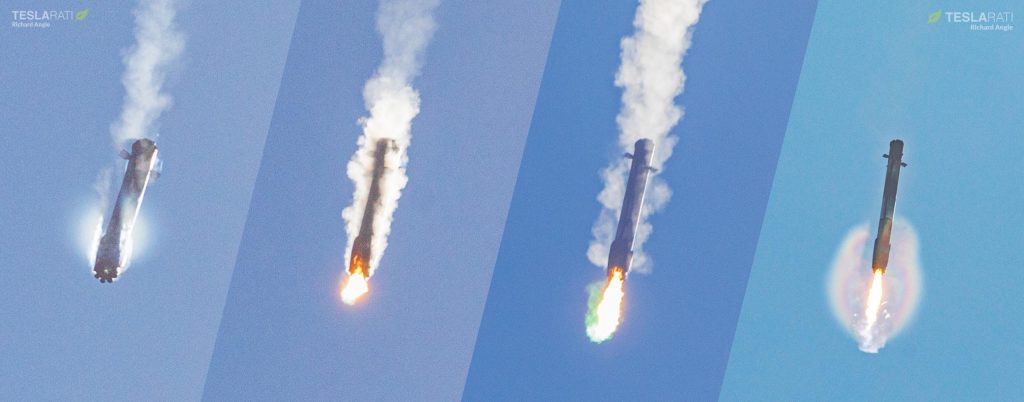
As such, it’s no surprise that SpaceX’s Smallsat Rideshare Program has received as much demand as it has. While relatively insignificant in the scope of the rest of the company’s substantial launch and services revenue, SpaceX has now safely delivered 323 small satellites to orbit for 100+ customers with just three dedicated Transporter missions. As an example, that means that in less than 12 months, SpaceX has launched about three times as many small satellites as dedicated small satellite launch company Rocket Lab has launched in the last four years. It’s no surprise, then, that Rocket Lab has already announced plans to develop a far larger, more reusable rocket after just 20 successful Electron launches.
Meanwhile, as dozens of other startups work on similar small rockets that aim to launch around 500-1500 kg to low Earth orbit (LEO), SpaceX – who began its existence developing the much smaller Falcon 1 rocket – almost immediately abandoned small rockets to focus on the much larger Falcon 9 and Falcon Heavy vehicles. Thanks to reusability, even a moderately loaded two-stage Falcon 9 with a flight-proven booster almost certainly costs SpaceX several times less per kilogram launched than a fully-loaded Falcon 1.
The booster that launched Transporter-3 is a perfect example. Depending on how one measures it, the launch likely cost SpaceX between $15M and $30M to deliver 105 satellites – likely weighing 3-4 tons total – to sun-synchronous orbit (SSO). SpaceX charges customers a fixed price of $1 million for a 200 kg (440 lb) slot on a Transporter mission, meaning that a 4-ton payload would theoretically net the company $20M. In comparison, in 2005, SpaceX was selling Falcon 1 – designed to launch 1 ton to LEO and ~400 kg to SSO – for the equivalent of around $8 million today. In other words, Falcon 1 customers would have paid about $20,000/kg versus $5,000/kg for a slot on a reusable Falcon 9.
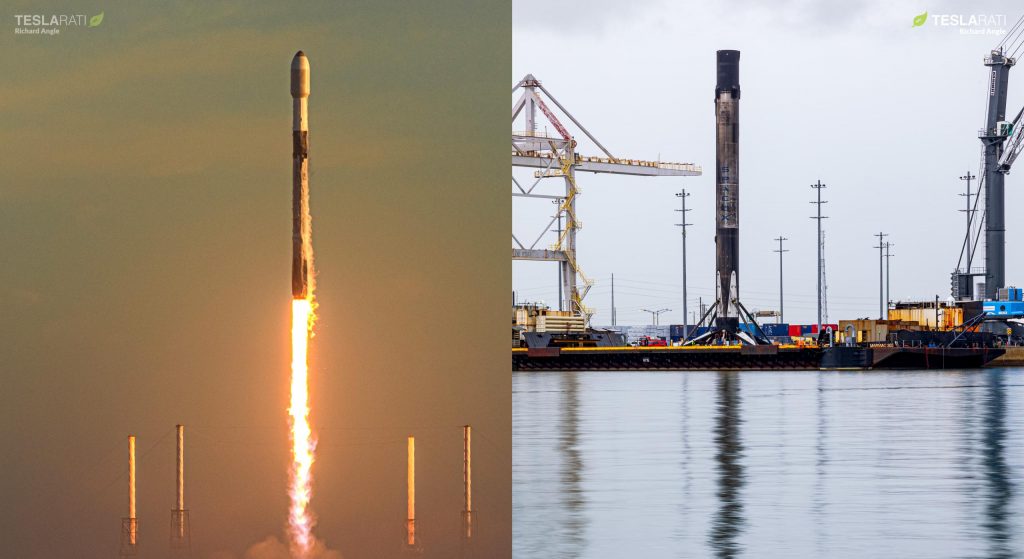

The kicker: Transporter-3 was Falcon 9 B1058’s tenth orbital-class launch in just 19 months, averaging one launch every 59 days. Technically, before a major downtick in SpaceX launch activity beginning in mid-2021, B1058 had actually managed eight launches in less than a year – one launch every ~45 days. Transporter-3 isn’t even its first dedicated rideshare mission – the same booster launched another 133 customer smallsats on Transporter-1 almost exactly a year ago. B1058 has also launched two astronauts, two Dragons, a South Korean geostationary communications satellite, and approximately 290 Starlink spacecraft, amounting to around 120 tons (~260,000 lb) of payload delivered to orbit in a year and half – roughly equivalent to an entire Saturn V launch to low Earth orbit for a tiny fraction of even the marginal cost of the giant Moon rocket.
SpaceX has plans for another two Transporter rideshare launches later this year. The company has as many as three more Falcon 9 launches scheduled for the second half of January, including Starlink 4-6 on January 17th and Italy’s CSG-2 Earth observation satellite on January 27th. Starlink 4-7 is expected to launch around the same time as CSG-2.

News
Tesla Insurance officially expands to new U.S. state
Tesla’s in-house Insurance program first launched back in late 2019, offering a new way to insure the vehicles that was potentially less expensive and could alleviate a lot of the issues people had with claims, as the company could assess and repair the damage itself.
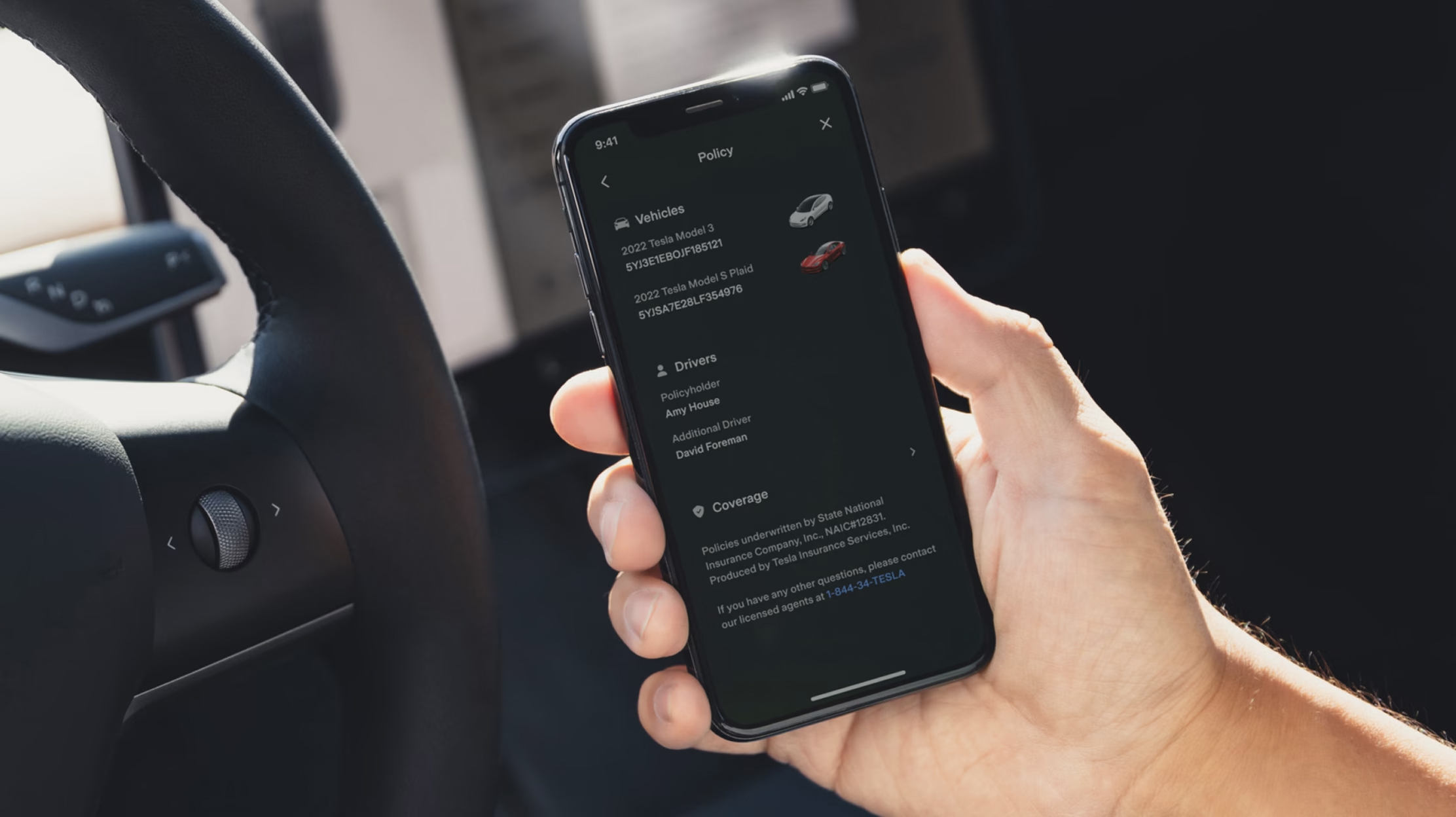
Tesla Insurance has officially expanded to a new U.S. state, its thirteenth since its launch in 2019.
Tesla has confirmed that its in-house Insurance program has officially made its way to Florida, just two months after the company filed to update its Private Passenger Auto program in the state. It had tried to offer its insurance program to drivers in the state back in 2022, but its launch did not happen.
Instead, Tesla refiled the paperwork back in mid-October, which essentially was the move toward initiating the offering this month.
BREAKING: Tesla Insurance has just officially launched in Florida.
This is the first new state to receive @Tesla Insurance in more than 3 years. In total, Tesla insurance is now available in 13 U.S. states (map in thread below of all the states).
Tesla Insurance in Florida uses… pic.twitter.com/bDwh1IV6gD
— Sawyer Merritt (@SawyerMerritt) December 17, 2025
Tesla’s in-house Insurance program first launched back in late 2019, offering a new way to insure the vehicles that was potentially less expensive and could alleviate a lot of the issues people had with claims, as the company could assess and repair the damage itself.
It has expanded to new states since 2019, but Florida presents a particularly interesting challenge for Tesla, as the company’s entry into the state is particularly noteworthy given its unique insurance landscape, characterized by high premiums due to frequent natural disasters, dense traffic, and a no-fault system.
Annual average premiums for Florida drivers hover around $4,000 per year, well above the national average. Tesla’s insurance program could disrupt this, especially for EV enthusiasts. The state’s growing EV adoption, fueled by incentives and infrastructure development, aligns perfectly with Tesla’s ecosystem.
Moreover, there are more ways to have cars repaired, and features like comprehensive coverage for battery damage and roadside assistance tailored to EVs address those common painpoints that owners have.
However, there are some challenges that still remain. Florida’s susceptibility to hurricanes raises questions about how Tesla will handle claims during disasters.
Looking ahead, Tesla’s expansion of its insurance program signals the company’s ambition to continue vertically integrating its services, including coverage of its vehicles. Reducing dependency on third-party insurers only makes things simpler for the company’s automotive division, as well as for its customers.
News
Tesla Full Self-Driving gets sparkling review from South Korean politician
“Having already ridden in an unmanned robotaxi, the novelty wasn’t as strong for me, but it drives just as well as most people do. It already feels like a completed technology, which gives me a lot to think about.”
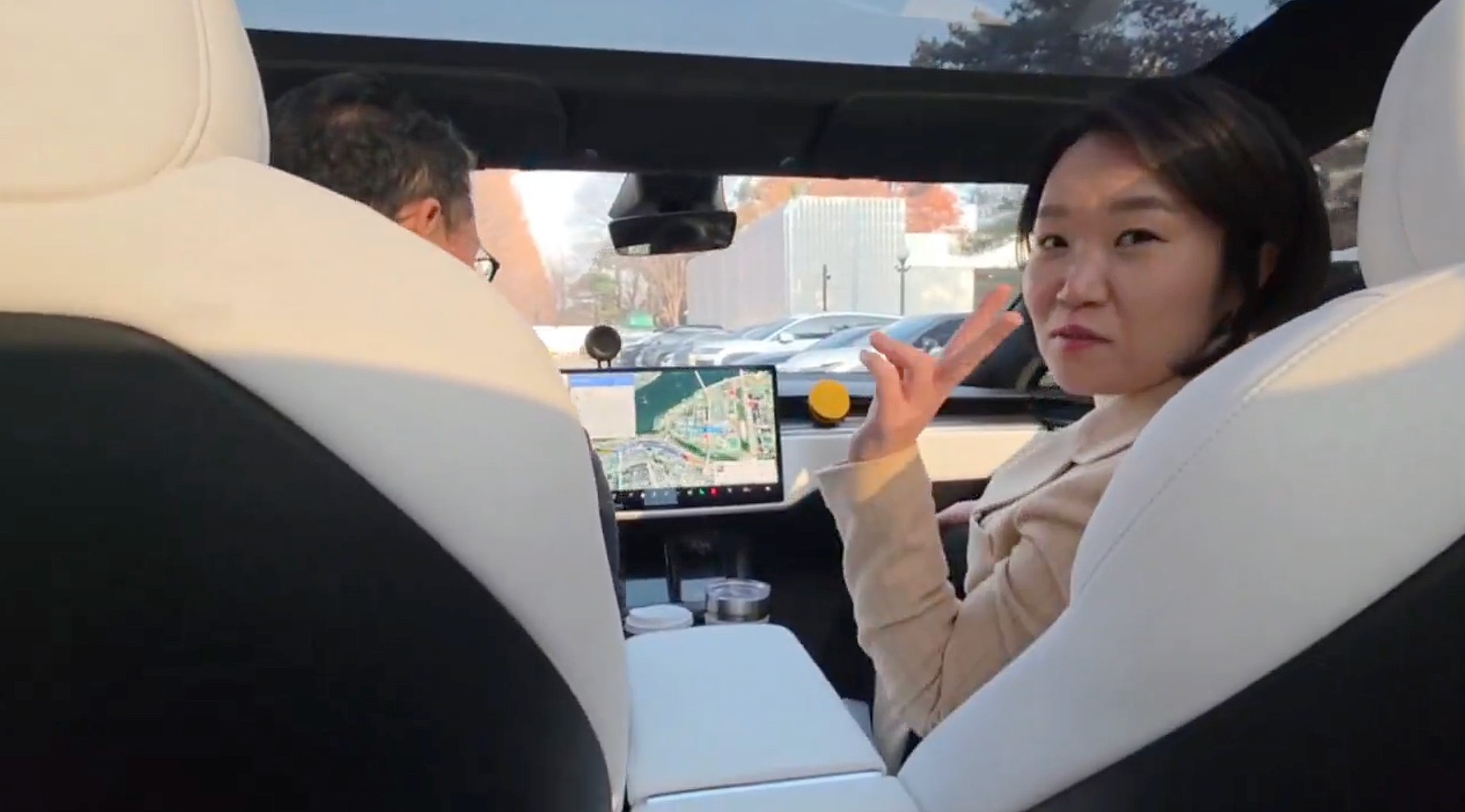
Tesla Full Self-Driving got its first sparkling review from South Korean politician Lee So-young, a member of the country’s National Assembly, earlier this week.
Lee is a member of the Strategy and Finance Committee in South Korea and is a proponent of sustainable technologies and their applications in both residential and commercial settings. For the first time, Lee was able to utilize Tesla’s Full Self-Driving technology as it launched in the country in late November.
Her thoughts on the suite were complimentary to the suite, stating that “it drives just as well as most people do,” and that “it already feels like a completed technology.”
드디어 오늘, 서울에서 테슬라 FSD 체험 했습니다.
JiDal Papa님의 모델S 협찬에 힘입어^^ 파파님 정말 감사합니다.
국회 -> 망원시장 -> 홍익대 -> 국회 복귀 코스였고요.
이미 무인 로보택시를 타봐서 그런지 신기함은
덜했지만, 웬만한 사람만큼 운전을 잘하네요.이미 완성된 기술이라고… pic.twitter.com/8pAidHBpRG
— 이소영 국회의원 (Soyoung Lee) (@im_soyounglee) December 17, 2025
Her translated post says:
“Finally, today I got to experience Tesla FSD in Seoul. Thanks to the Model S sponsored by JiDal Papa^^, I’m truly grateful to Papa. The route was from the National Assembly -> Mangwon Market -> Hongik University -> back to the National Assembly. Having already ridden in an unmanned robotaxi, the novelty wasn’t as strong for me, but it drives just as well as most people do. It already feels like a completed technology, which gives me a lot to think about. Once it actually spreads into widespread use, I feel like our daily lives are going to change a lot. Even I, with my license gathering dust in a drawer, don’t see much reason to learn to drive a manual anymore.”
Tesla Full Self-Driving officially landed in South Korea in late November, with the initial launch being one of Tesla’s most recent, v14.1.4.
It marked the seventh country in which Tesla was able to enable the driver assistance suite, following the United States, Puerto Rico, Canada, China, Mexico, Australia, and New Zealand.
It is important to see politicians and figures in power try new technologies, especially ones that are widely popular in other regions of the world and could potentially revolutionize how people travel globally.
News
Tesla dispels reports of ‘sales suspension’ in California
“This was a “consumer protection” order about the use of the term “Autopilot” in a case where not one single customer came forward to say there’s a problem.
Sales in California will continue uninterrupted.”

Tesla has dispelled reports that it is facing a thirty-day sales suspension in California after the state’s Department of Motor Vehicles (DMV) issued a penalty to the company after a judge ruled it “misled consumers about its driver-assistance technology.”
On Tuesday, Bloomberg reported that the California DMV was planning to adopt the penalty but decided to put it on ice for ninety days, giving Tesla an opportunity to “come into compliance.”
Tesla enters interesting situation with Full Self-Driving in California
Tesla responded to the report on Tuesday evening, after it came out, stating that this was a “consumer protection” order that was brought up over its use of the term “Autopilot.”
The company said “not one single customer came forward to say there’s a problem,” yet a judge and the DMV determined it was, so they want to apply the penalty if Tesla doesn’t oblige.
However, Tesla said that its sales operations in California “will continue uninterrupted.”
It confirmed this in an X post on Tuesday night:
This was a “consumer protection” order about the use of the term “Autopilot” in a case where not one single customer came forward to say there’s a problem.
Sales in California will continue uninterrupted.
— Tesla North America (@tesla_na) December 17, 2025
The report and the decision by the DMV and Judge involved sparked outrage from the Tesla community, who stated that it should do its best to get out of California.
One X post said California “didn’t deserve” what Tesla had done for it in terms of employment, engineering, and innovation.
Tesla has used Autopilot and Full Self-Driving for years, but it did add the term “(Supervised)” to the end of the FSD suite earlier this year, potentially aiming to protect itself from instances like this one.
This is the first primary dispute over the terminology of Full Self-Driving, but it has undergone some scrutiny at the federal level, as some government officials have claimed the suite has “deceptive” naming. Previous Transportation Secretary Pete Buttigieg was vocally critical of the use of the name “Full Self-Driving,” as well as “Autopilot.”








